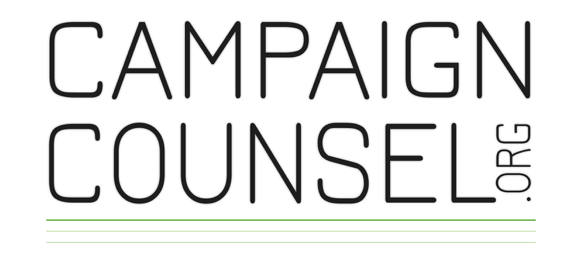The COVID-19 Crisis and Your Capital Campaign: Roadblocks and Reroutes
The pandemic triggered by COVID-19 has disrupted all nonprofit fundraising activities in some way. Planning and managing your capital campaign during this crisis may bring difficult decisions. Uncertainty and even fear are leaving some fundraisers feeling completely stalled. With strategic thinking and planning, we believe you can make those decisions in a way that benefits your nonprofit today, tomorrow and for months to come.
Reassess Feasibility Studies and Capital Campaigns with COVID-19 in Mind
Before you can make a plan for moving forward, you first need to evaluate where you are. Human service needs – food banks, employment resources, health care – are elevated in the current, crisis-fueled environment. Nonprofits that serve these needs will be best positioned to continue or start campaign feasibility studies and capital campaigns. Philanthropists may be sensitive to these needs over others.
Lifestyle organizations – arts, environmental, cultural – also matter in today’s climate and should continue to fundraise, especially when they can draw a direct line to filling human service needs. These organizations should think about the perceived importance of their work in the community during this time, as well as the perceived importance of any planned or started capital campaign. Ask yourself, can your nonprofit position itself as a critical service need? How will your current and prospective donors respond to this positioning during a feasibility study or a capital campaign? Answers to these questions will help you determine if it is wise to place your feasibility study on hold for a while.
You also will assess the components of your capital campaign and how the crisis and its aftermath may affect your facility’s design. For instance, a library campaign may now want to consider installing shelves on castors that can be easily moved to create more flexibility for future space, in case the need for social distance measures arises again. These kinds of careful considerations could make the difference in being able to stay open versus closing during potential future outbreaks and should be considered in a reimagined feasibility study or capital campaign.
Consider Your Board’s Outlook on the Crisis
Now is also the time to evaluate your board’s outlook on fundraising. Do board members have a positive or negative view on fundraising during the crisis? Are they encouraging you or hindering you from moving forward with fundraising during these uncertain times?
Our hope for you is that your board has a positive outlook, meaning they sense an immediacy of financial needs and of your service population’s needs and are willing to engage in fundraising. This is ideal because it means you have the strong backbone of support that you as an organization leader need during these challenging times.
However, fear and uncertainty are prevalent right now, so it is very possible that your board may have a more negative outlook on the current fundraising situation. They may feel that leadership is too busy providing services, or – more likely – is that they are too scared to engage in fundraising because they think it’s insensitive. We are hearing this, but the reality is that with thoughtful planning, you can get back on the fundraising road. Working through the steps that follow may help you and any reluctant board members realize the necessity and suitability of continued efforts.
Consider Your Case for Support
Before you can continue with any fundraising, make sure your case for support addresses the impact COVID-19 has had on your organization, why you need fundraising support especially now, and what future positive impact you can have on your community if your fundraising goals are met.
Assess the Roadblocks that May Impact Your Work
Take a careful look at the following challenges you may encounter and develop a plan for navigating them.
The need for capital. Ask yourself, what is the immediate need of my organization and community? Do we realistically need to focus on bolstering our overhead, or is expansion/improvement/building new our priority? At the heart of this question is an even more important question: Can we fulfill our mission in our current space?
Leadership team outlook. We know that fundraising right now MUST happen, so take some time to consider how you can help your board and administrators understand that moving forward with a fundraising strategy isn't tone deaf; in fact, avoiding fundraising entirely is more tone deaf than anything. The vital services your nonprofit provides still exist, as does fundraising for them.
External relevance of your nonprofit. How were you able to serve your community while your doors were closed, if at all? What is your history as a fundraising organization within the community – are you well established or fairly new? Look beyond your nonprofit and assess how has COVID-19 impacted your community as a whole. Think about these issues carefully. You can't go into a post-COVID fundraising strategy blindly; you need to assess the situation from all sides so you know the relevance of your nonprofit within the COVID-19 context of your community right now.
Uncertainty over the future of fundraising. People may be afraid to meet face-to-face for a while, especially if your donors are in a more at-risk age group. Making these asks virtually may be a challenge, but it's certainly possible. Closing those gifts virtually is much more complicated. Since the donor will have to complete and send paperwork in after your virtual meeting, rather than during your in-person meeting, you'll find new ways to make sure you're effectively closing your gifts.
Get Back on the Road with a New Fundraising Plan
Be flexible with your timeframe. You likely won't hit your fundraising goal in the same timeframe; likewise, your construction timeframe and costs may need to be adjusted to account for new COVID-related requirements. If you're launching a feasibility study or continuing with a campaign, be nimble with your methods. We are currently successfully leading our clients in using video conferencing as a substitute for in-person meetings; this method is certainly better than phone calls because it does feel more personal, but we know not everyone has adapted to this new trend. A phone call is always better than nothing. If you're permitted and if it's appropriate, you can resume in-person meetings as soon as everyone is comfortable. The bottom line is that you should continue to pursue personal interaction through creative methods during these times. This level of interaction will be key as you cultivate and solicit your donors.
Update your case and other ancillary materials. The next step in your successful fundraising plan is updating your ancillary materials. You cannot proceed with solicitations without addressing the impact of COVID-19 on your organization in your case for support, website, or appeals. Doing so would appear tone-deaf. Instead, acknowledge the impact – both negative and positive, if possible – and address why successfully fundraising for your organization will positively impact your community in the future.
Target and segment your donors to make your asks more effective. Fundraising again “like we used to” is going to feel like an impossible task, so make your time and energy effective by segmenting and targeting your high-capacity prospects by identifying them through wealth screening. Your database may have wealth screening built into it; if not, you have some alternative options available too. Free resources like Zillow, FEC.gov or SEC.gov, or DonorSearch can give insight into real estate worth, political giving, stock values, or past giving to organizations. There are other paid platforms out there too, like iWave, GiveEffect, and contractors who specialize in wealth screening. Research the options to find the best fit for your organization's needs and budget. Make the most of your efforts and be very strategic about who you are soliciting, and for how much.
Another component to consider is your current campaign phase. If your campaign is in or approaching the public phase that comes at the end, consider alternatives with small-capacity donors. Perhaps you want to postpone the public phase or segment prospects based on giving capacity. You also may want to pivot entirely, letting your donor prospects know that your campaign is on hold until more immediate needs are met.
Communicate creatively. There has been a wonderful spike in the ways people are engaging virtually during this pandemic. All age groups are engaging with technology at a much higher level because they must. Use this to your advantage. You can livestream Facebook updates, send video thank you notes to prospects and donors, make a short video using an app like TikTok about why your nonprofit is awesome, or host a virtual happy hour on Zoom with your top prospects. The technologies people have relied on during stay-at-home orders won’t be abandoned. Keep thinking about how to use them creatively.
And finally, use athletic listening to connect with your donors. Athletic listening means hearing the prospect fully without preparing your next response. Be empathetic, authentic and understand where they are coming from. Use this skill to open up real dialogues that build your understanding about the donor and their understanding about your nonprofit.
If you would like to learn more about how CampaignCounsel.org can help you through this process, contact us now. We are happy to help. Or sign up to receive our tips.







